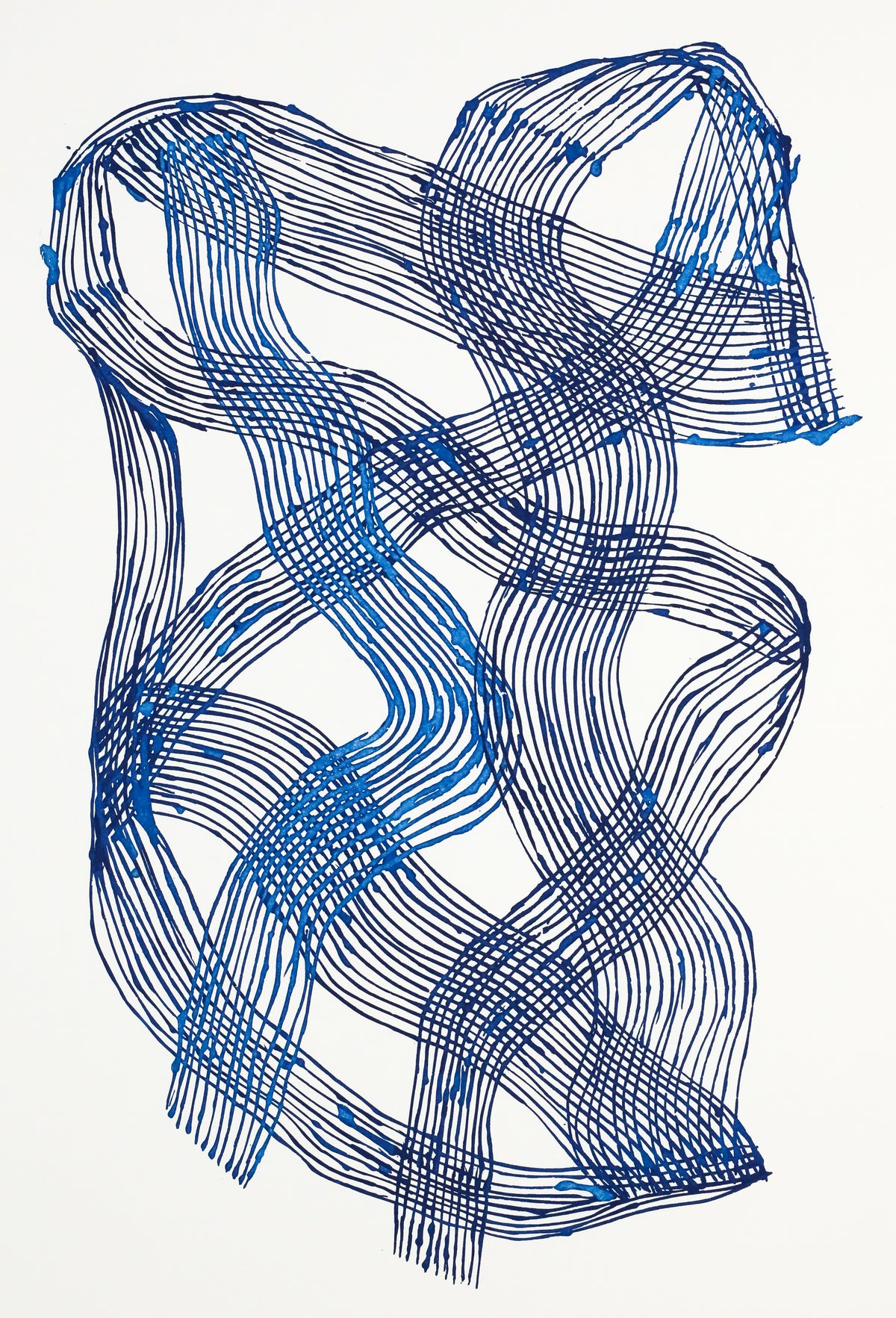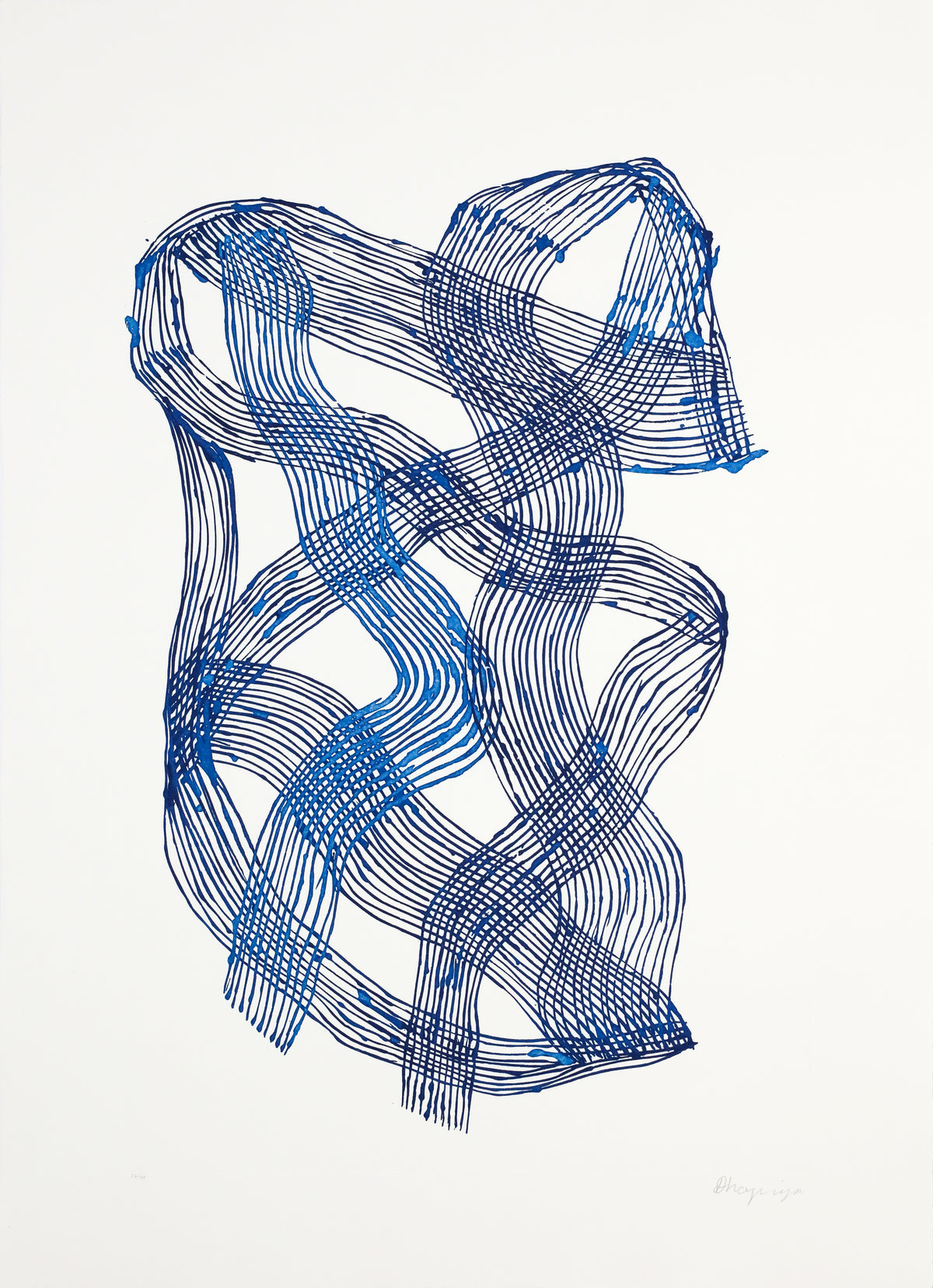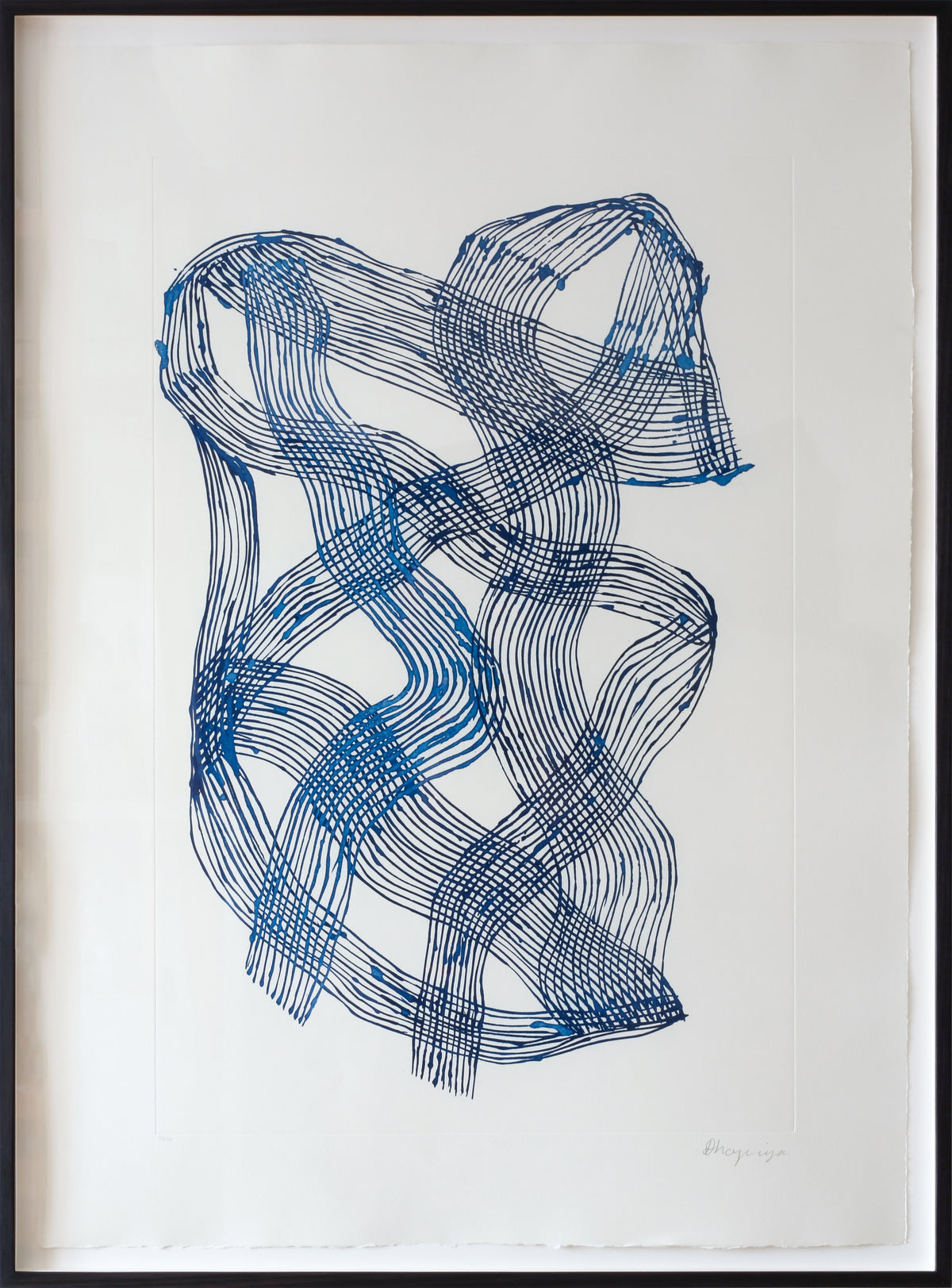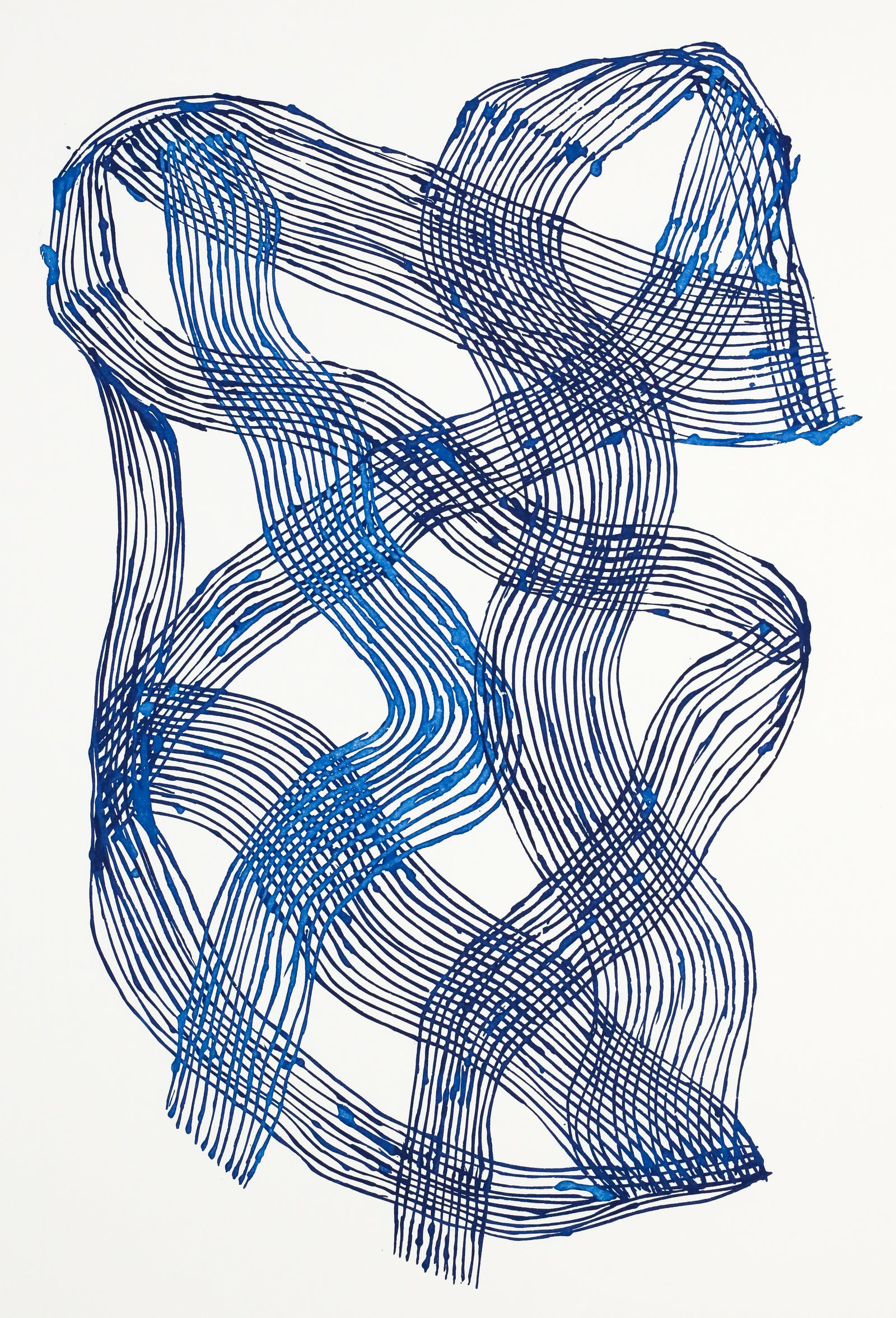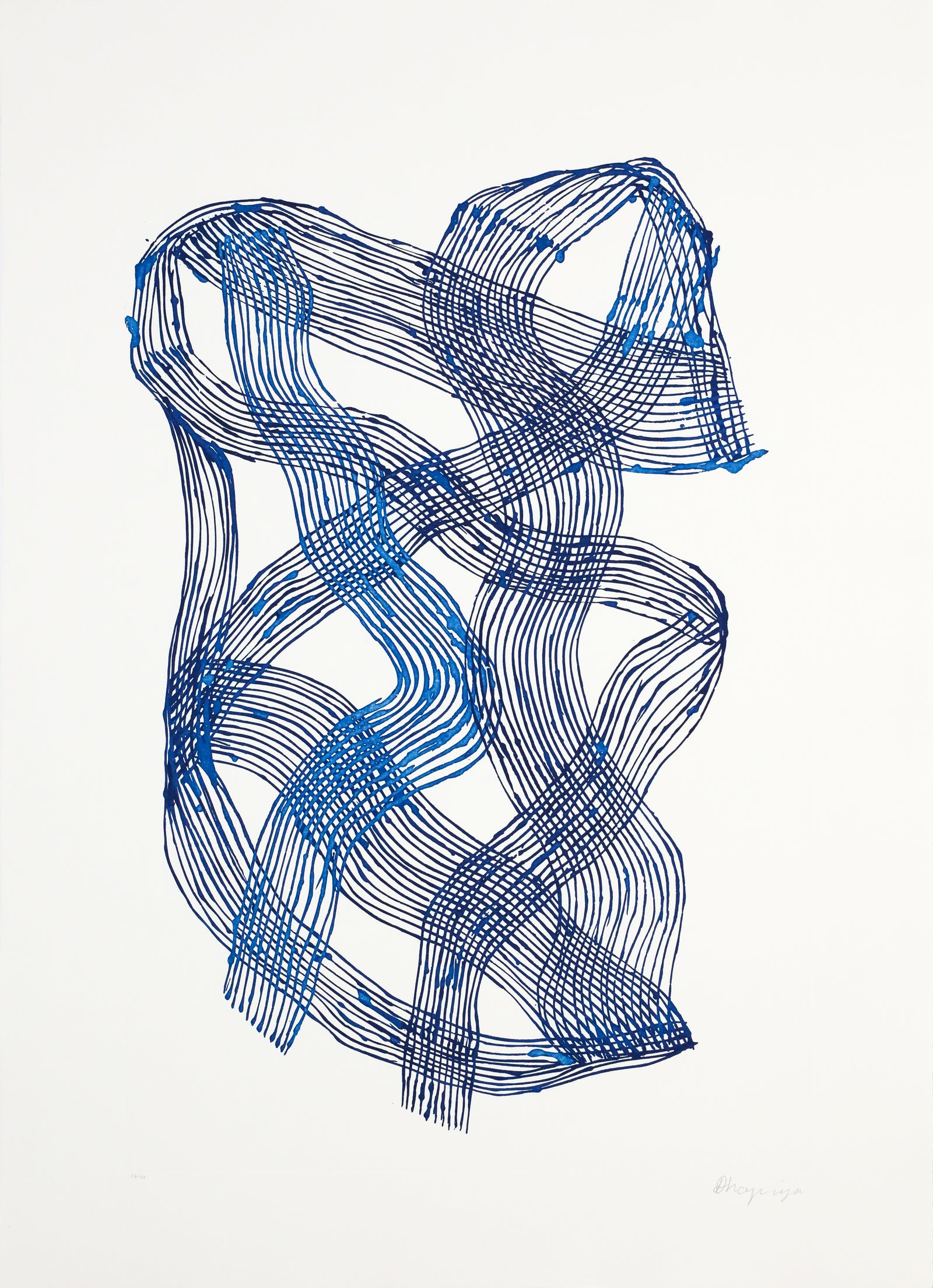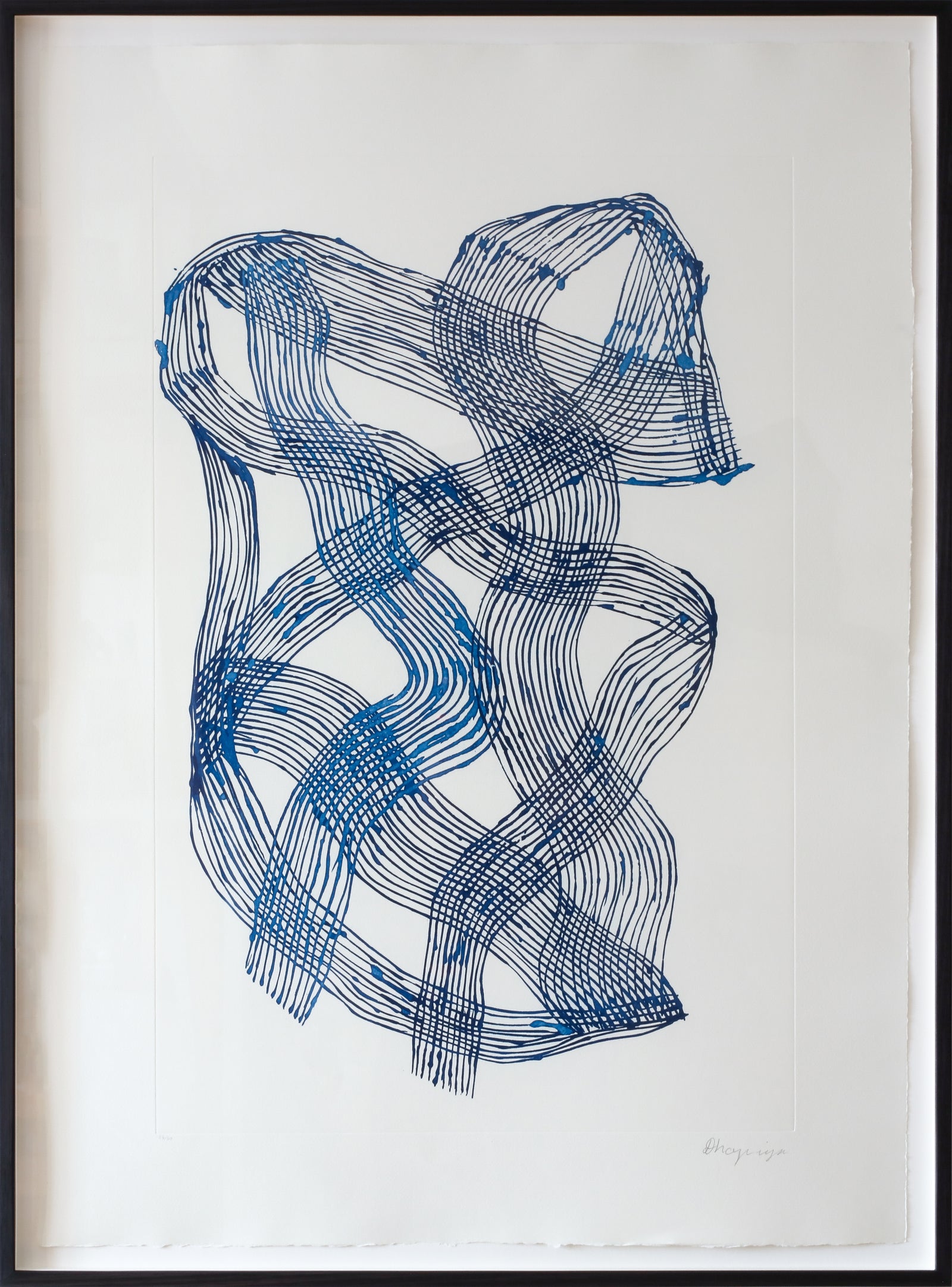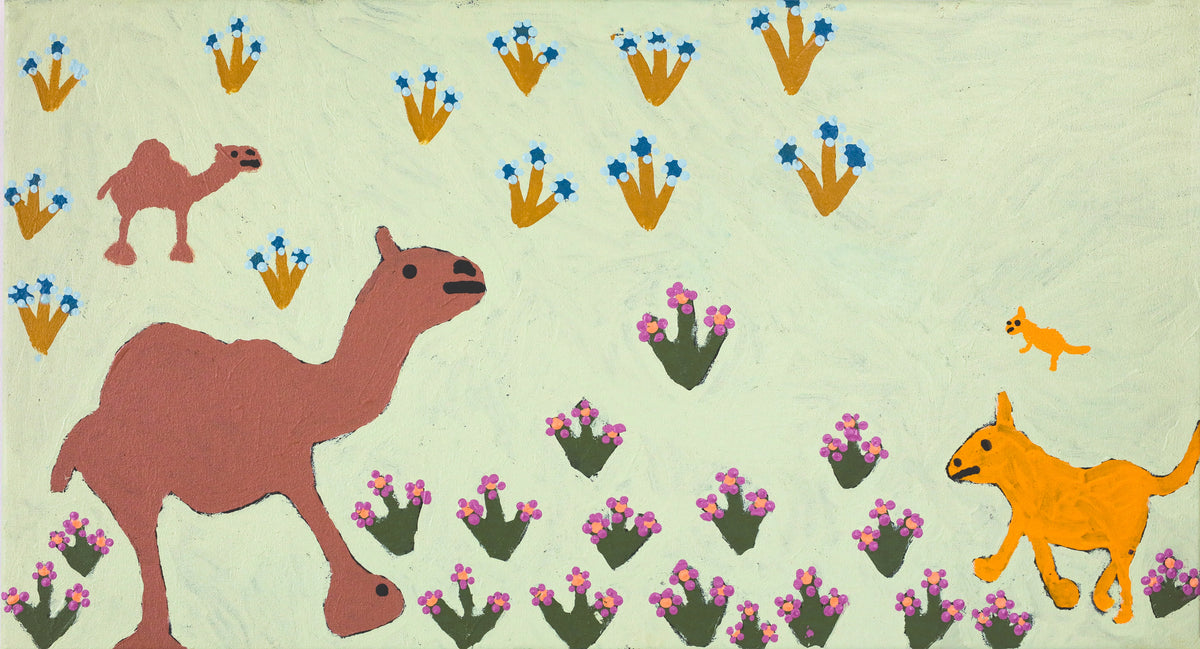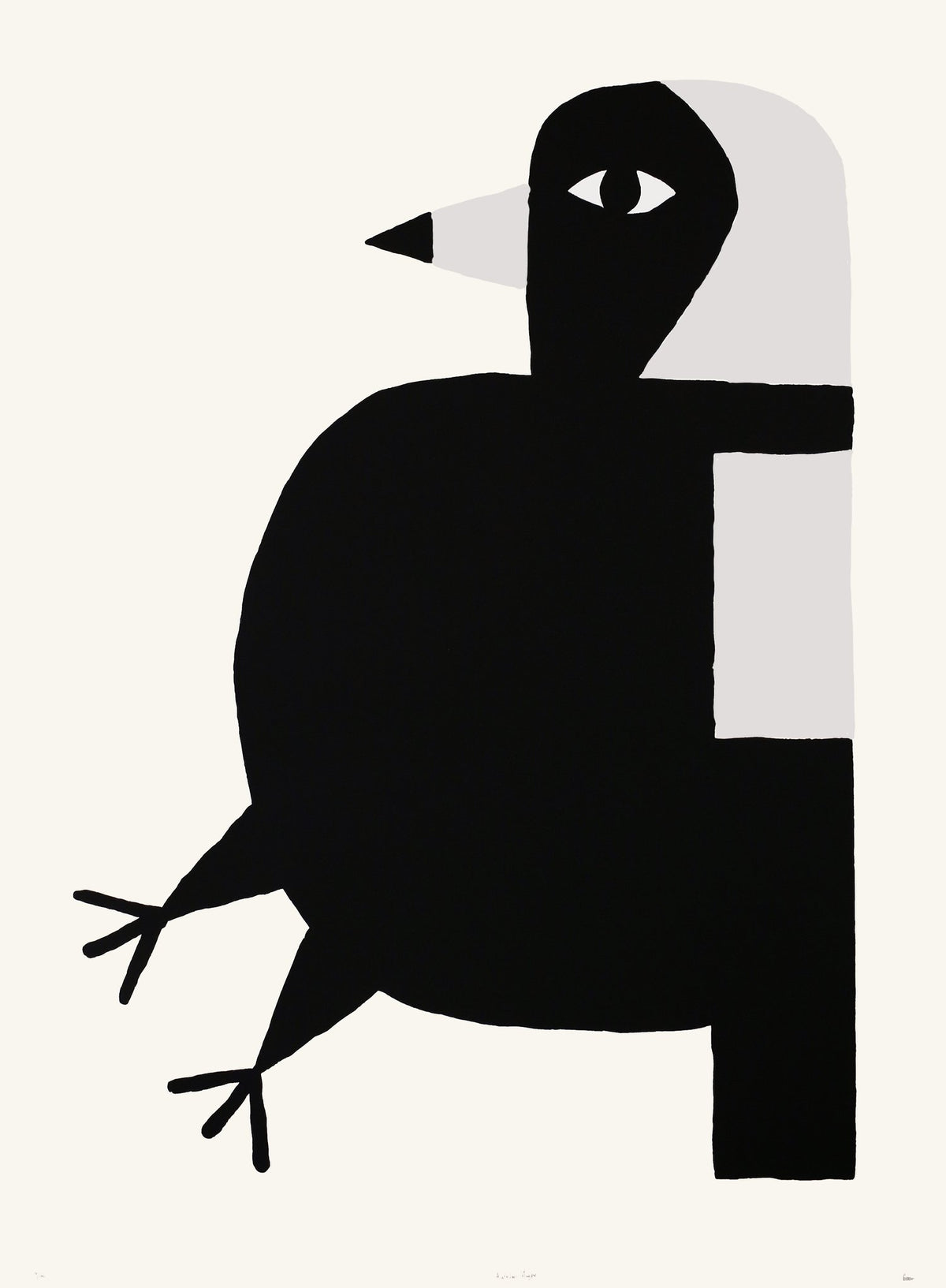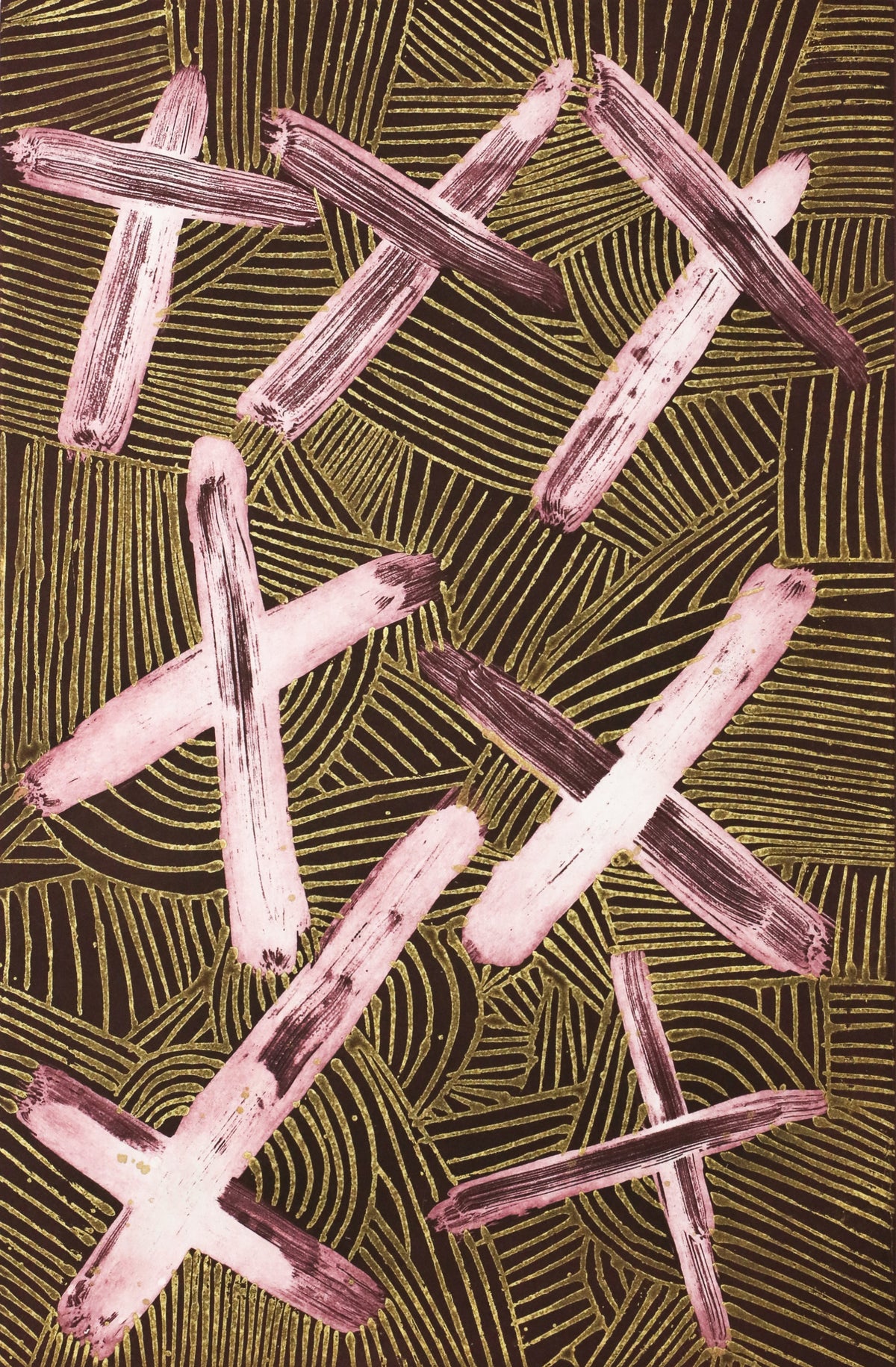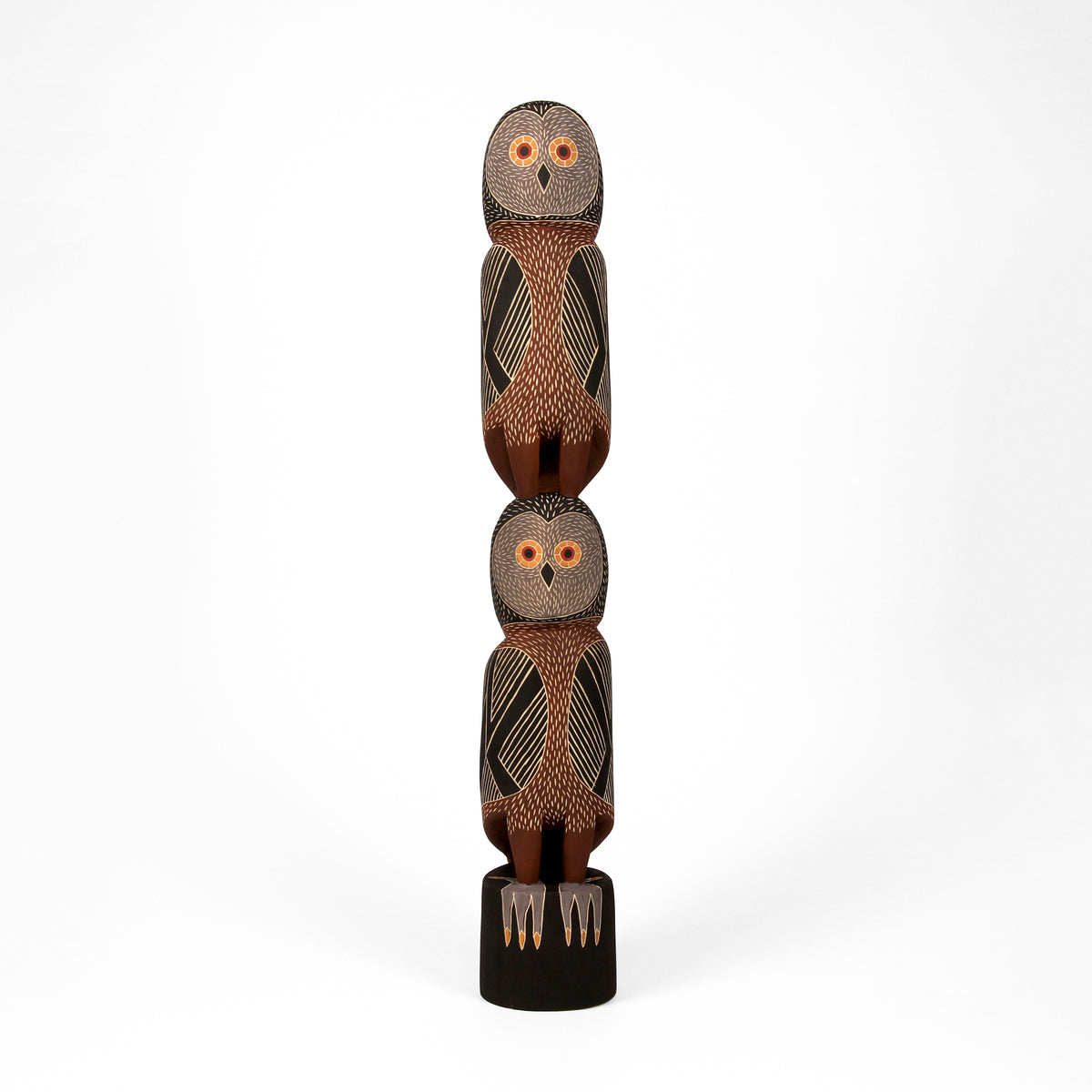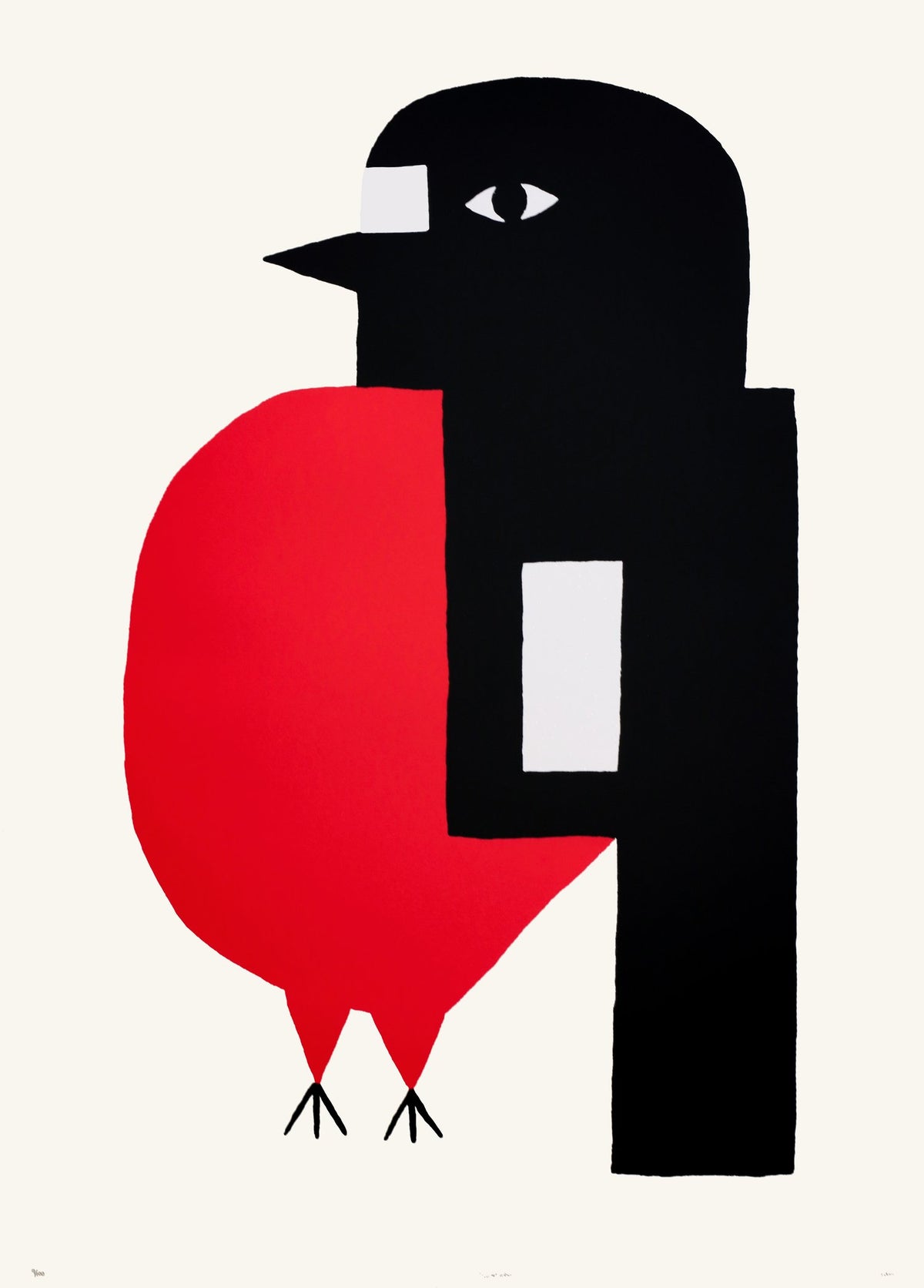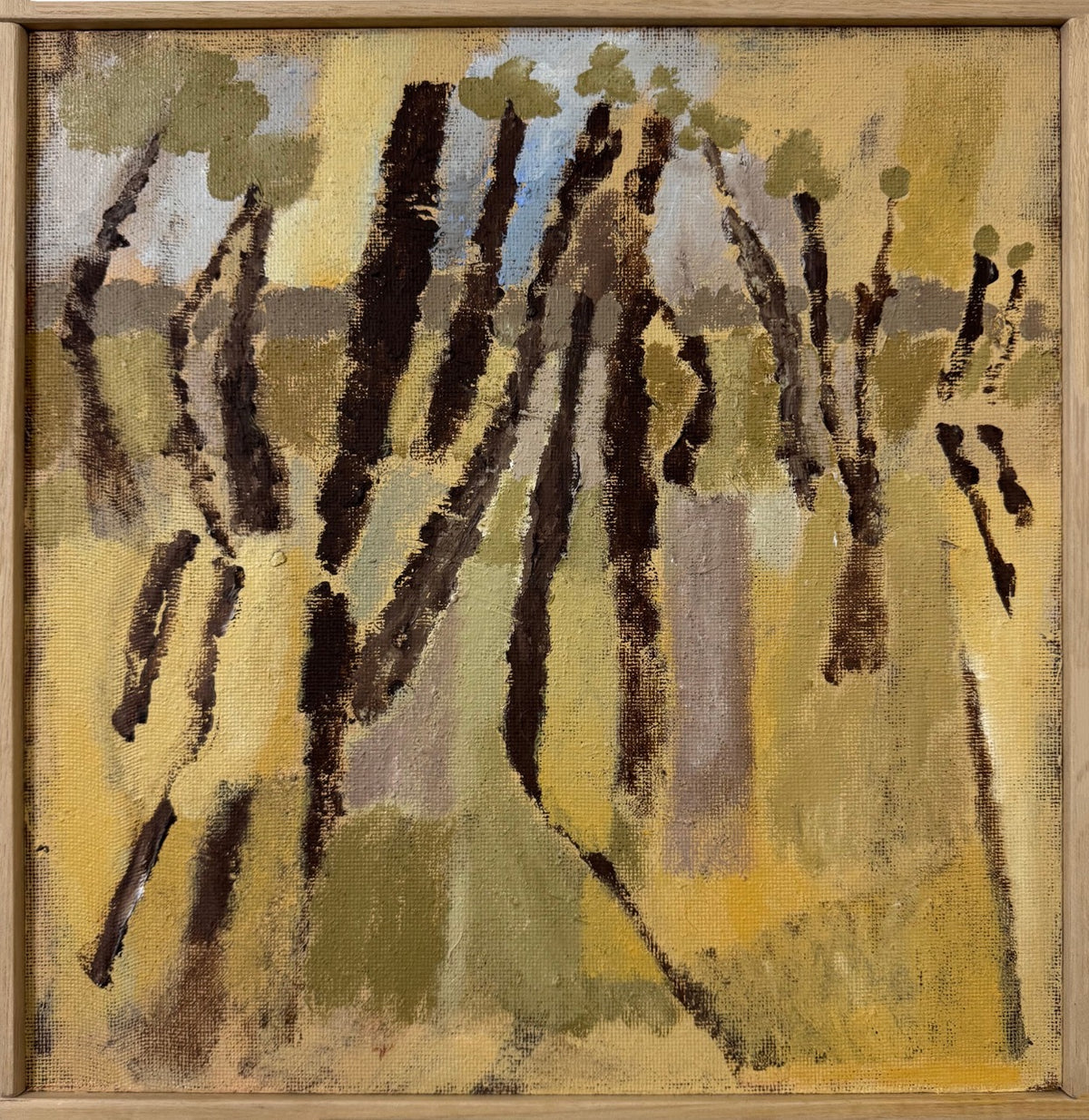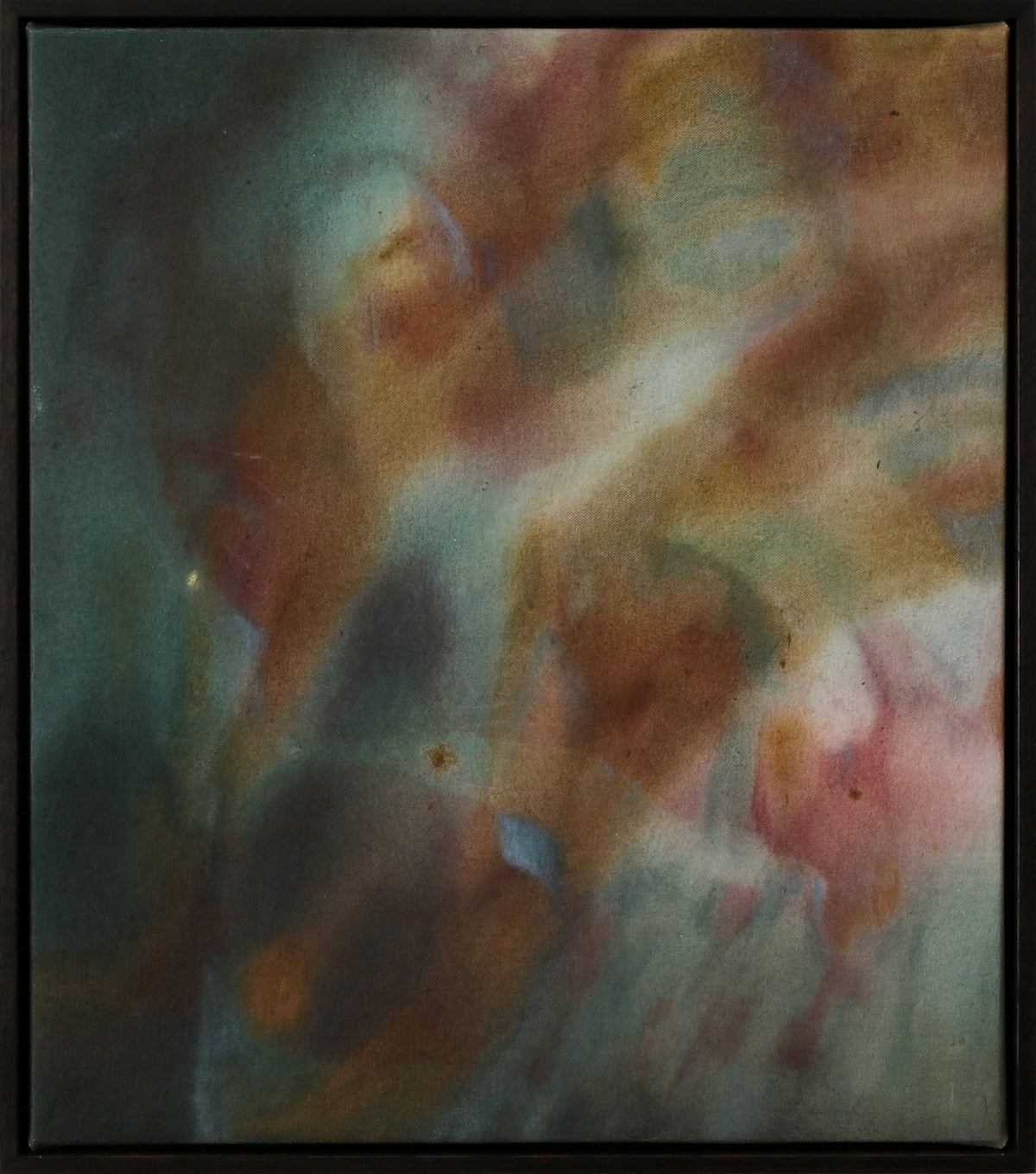Galiku II 5127-24
This work refers to a new motif that Dhopiya initiated in early 2024. It references the threads of the material known as galiku, djårritjarri or manydjarrka. This is the cloth which the Makassans would bring and share with Yolŋu as a part of the broader family in return for their labour and access to trepang. As per the songs and often practiced dances relating to this material a part of the story is the fraying under impact from the winds. This then reveals the nature of the material to be similar to that of Yolŋu cosmology made up of many threads like the family connections that embody gurruṯu. The lines are made with the fine lines of the marwat or line brush made from a few strands of straight hair usually from a young girl. This is a distinctive Yolŋu painting apparatus and style which is manifest here in its most reductive form.
Galiku is also a material used for dancing. Yirritja people, men, women, children, wear it during Garma and other times for funerals, or the kids dancing at school. It’s special. We Gumatj identify ourselves with yellow fabric. Inside the Galiku is cotton and if you tear it off you see the threads. Galiku is the material that makes the flags and the sails of the praus. Our dance and song celebrates the North wind which brings those boats carrying our family back to us. It sings the wind which snatches at the flags makes them climb and fly and then frays them and finally whips them away as it becomes the cyclone.
The material relates to the seafaring Makassan family members whose centuries old visits and settlements defined the economy and society of Yolŋu. A translation of Dr. G. Yunupiŋu’s song Galiku based on the Gumatj manikay (sacred song) is as follows;
Flags
Dance, dance, dance, dance, dance hits!, snatch it!
From this northerly wind, snatch it!
On the mass the flags are playing, snatch it!
The flags torn by the wind, snatch it!
Climbing. climbing, climbing. climbing. climbing. climbing. climbing. climbing, fraying to pieces, snatch it!
Torn flags. mast arms
giḻaŋ. giḻaŋ, giḻaŋ. on the masts. shredded flags
shredded by the power of wuḏuminy. gaŋgayparra winds
You (flags) asked to fly dancing. from the northern wind
Flags dancing there at Mindharrŋura. Wilirrŋura. Muthamul
you grandmother-flag mob, you Mandjikay families. m.m. m.m
Soft sands of Mawuyul. at the place Yanhdhaḻa
For who? For Bāpadjambaŋ. at the place Djulkayalŋgi
Also playing there for the Birrinydji. Djindjiray Baḻawuku
Māwuḻmirri. Gandjamarr Birrapirra nation
you first, clash the knives
at the place, Seki Gurrumuru, m.m, m.m
Here is the trepang oven, at the Gāḏinŋura Djaltjunbi (Bawaka)
this Dhuwa country. Girriwaḻa Ṉämbatjŋu (Yāŋunbi)
Djarpanbulu. Raŋimula Gaṉdjitji (Barrkira)
the mast flags flew, for Gätjiŋ. m.m. m.m
Where have the masts come from to be with Ḻuku-ḏumdhuna (ancestor)
From Melwula Barrthanaga, to Dholtji Manuna
Oh my grandmother families. Ḏilingarra Yawunbaŋu
Bungurrukurru, Walaywalayuna m.m, m.m (Warramiri nation)
Raising a new folded flag, take it
‘giḻaŋ’ as it is raised up the mast. take it
Singing the country Djanŋala. Gapala, Barrumbarru, take it
Because this is marked for Gätjiŋba, take it
giḻaŋ. giḻaŋ, giḻaŋ, giḻaŋ. giḻaŋ, giḻaŋ, giḻaŋ. disappears from sight
Edition of 50.
SHIPPING
Brunswick Street Gallery would be pleased to arrange a quote for shipping if you are unable to collect directly from us.
Please be advised that oversized and/or fragile artwork or artworks being sent to remote areas may incur additional shipping costs.
FLEXIBLE PAYMENT
Afterpay, Laybuy
EXHIBITIONS
Artworks purchased from current exhibitions will be available for collection or shipping after the exhibition has ended.
–
